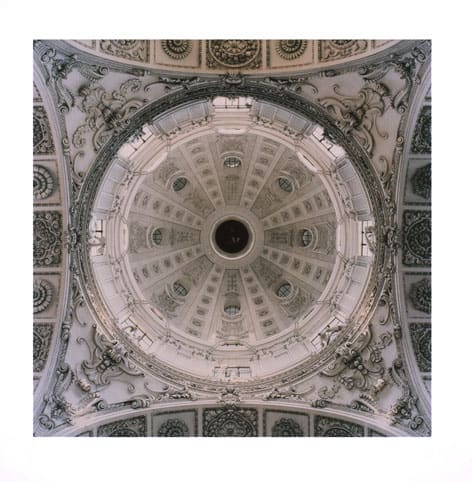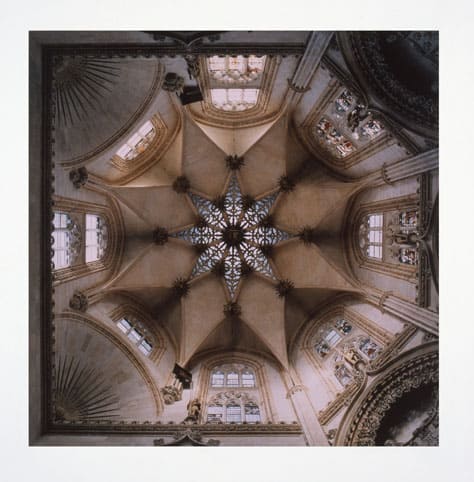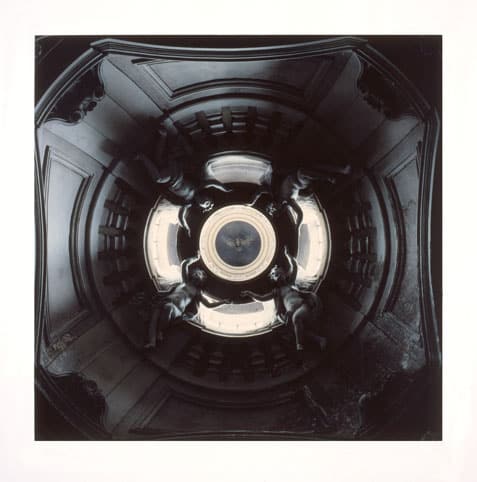
David Stephenson was born in Washington DC, USA in 1955, before relocating to Hobart to teach at the School of Art, University of Tasmania. Stephenson is a photographer who throughout his career has explored the idea of the sublime; that which inspires in us a sense of wonder or awe. While many artists have pursued the idea of the sublime through their work, for Stephenson this concept has been the foundation of his practice.
Stephenson’s inquiry into the sublime has seen him explore both natural and architectural sites, taking him from the central Australian outback, to the Arctic and Antarctic, and on travels throughout Europe. The four photographs by Stephenson held in the DCC Permanent Collection were taken by the artist as he travelled across Europe, visiting places of worship and photographing these ornate structures. These photographs are part of a Stephenson’s Dome series, which spans from 1993-2005 and numbers over one hundred images.

These striking images are recognisable as domes, but are also to a degree abstracted, each visually reminiscent of the image produced by a kaleidoscope. The photographs are both intricately detailed viewpoints of the decorative details of the domes, as well as evidence of the engineering feats of these mammoth structures. They provide a unique opportunity to linger upon details in a way that would be impossible within the space, due to both the dizzying effect of looking above and from attempting to ascertain details from the distance of the ground.
There is much symbolism associated with domes, from circles being read as representative of perfection or eternity, to the association of domes with royalty or the heavens. This symbolism is significant to Stephenson’s work, as while travelling through Europe in search of domes, he also photographed the night skies of the cities he visited, capturing both their beauty and their light pollution. The combination of these photographs seems to bridge the space between the landscape, or cityscape, and the skies or heavens; between the awe of the natural and the man-made sublime.

Both the awe-inspiring natural landscapes and the religious structures photographed by Stephenson may be considered sacred spaces – both can offer quiet places of reflection, contemplation and solace. The juxtaposition of these two manifestations of the sublime is powerful, as nature can provide a similar sense of awe and spiritual experiences for some as religion does for others. Part of this awe stems from the ability of both nature, and expansive and ornate architecture to make us aware of our own scale; of how we are simultaneously insignificant in the grand scheme of things, while also capable of achieving great feats, such as the architectural forms captured in these photographs.
-Erin Wilson, Curator
You can view more of David Stephenson’s work on his website and on The Derwent Project website